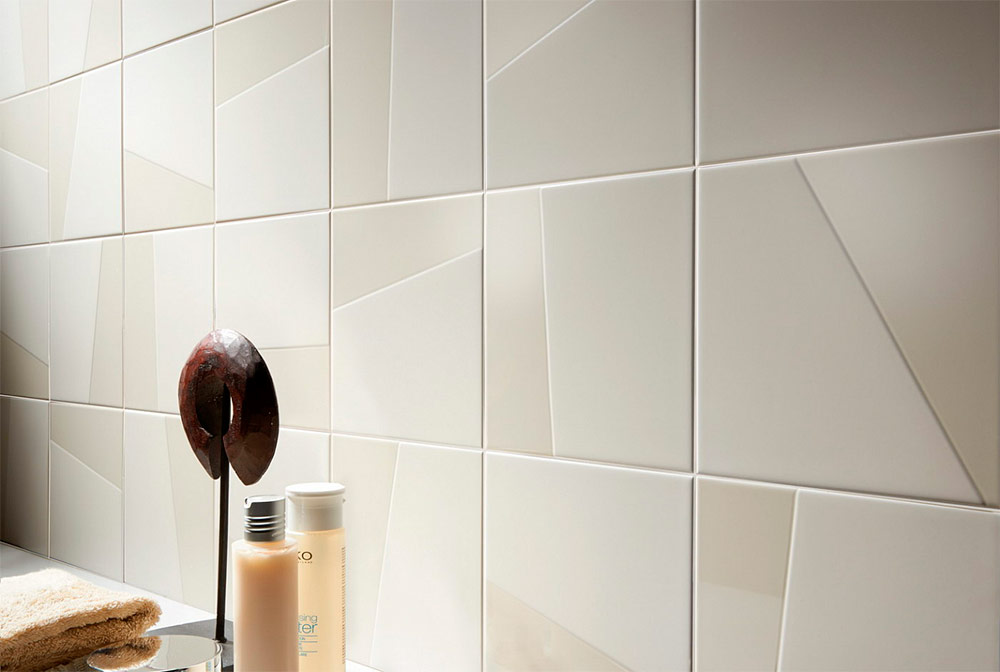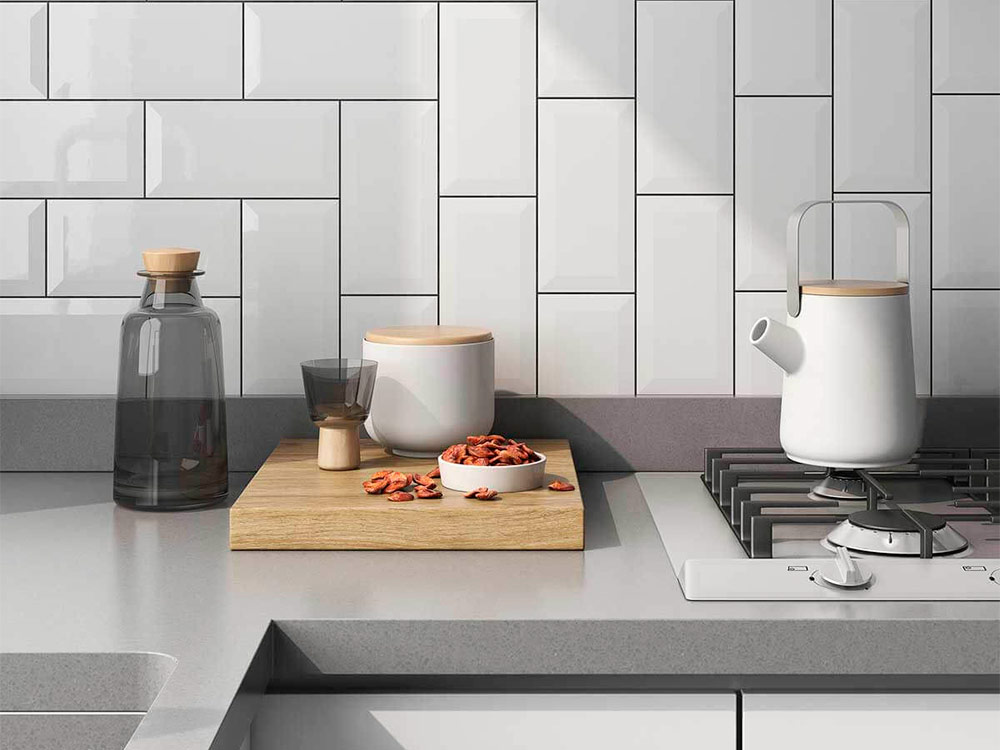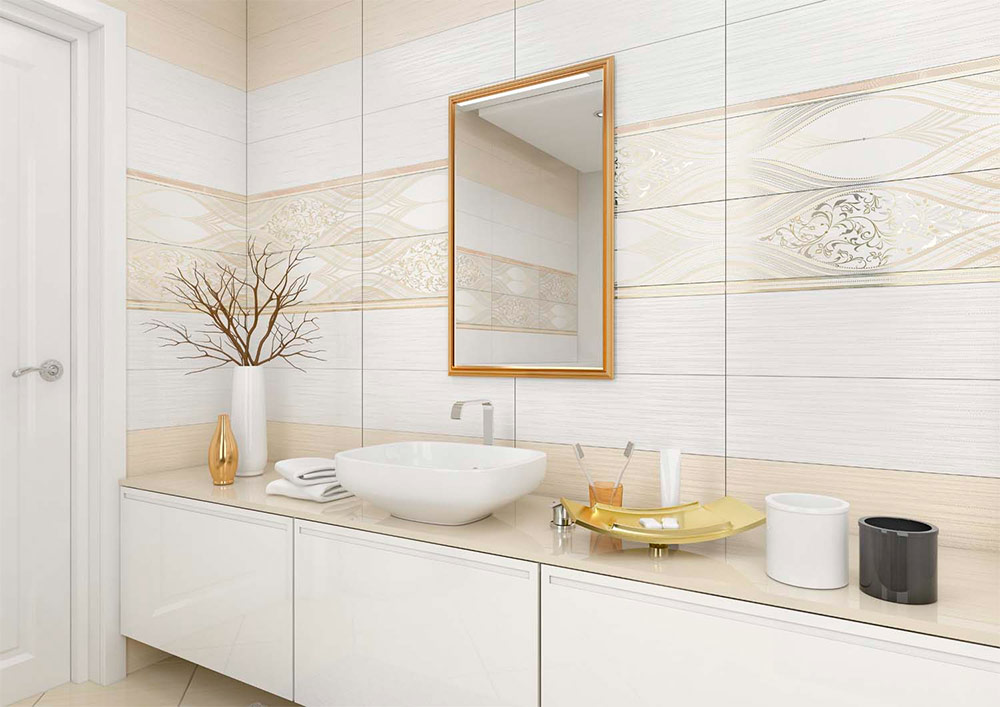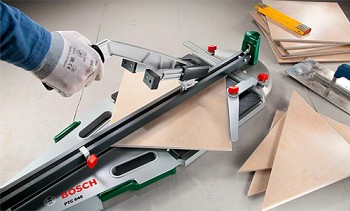How to choose a grout for tiles in the bathroom and other rooms
Deciding which grout to choose for the tile in the bathroom is often as difficult as picking the tile itself. Today the market offers such a wide variety of grouting mixtures (fugues) that only a specialist can determine the suitable material. There are basic aspects that you need to pay attention to when choosing a fugue. Having dealt with the characteristics of the mixtures, you can choose a high-quality grout for the tiles used.
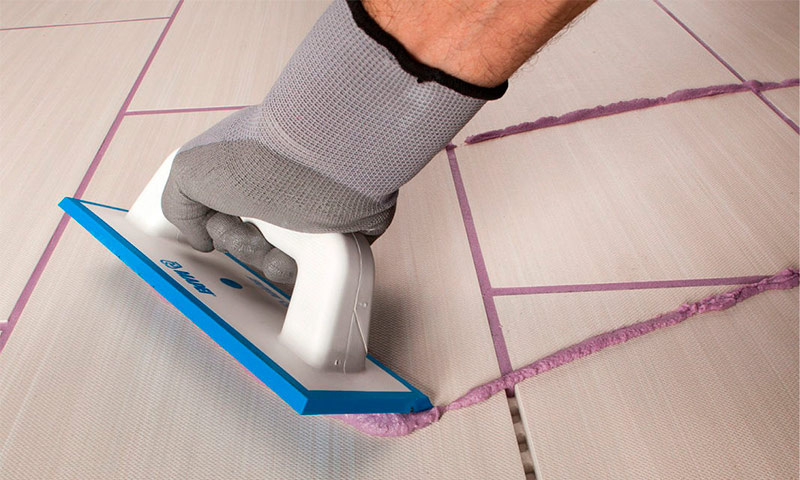
What is grout for tile joints and why is it needed
Grout is designed to fill the gaps between the tiles used for wall and floor cladding in the room.
The main functions of grout mixtures are:
- providing an attractive appearance of the cladding;
- preventing moisture and dirt from entering the joints;
- masking styling defects;
- tile life extension;
- protection against mold and mildew.
To choose the right fugue for the tile, you need to pay attention to the following factors:
- type of grout;
- color;
- appointment.
Equally important is the choice of the manufacturer. Grout should be purchased only from trusted manufacturers with an impeccable reputation.
How to determine the type of grout
The following types of grout are distinguished:
- cement;
- epoxy;
- polyurethane;
- silicate.
Cement grout
The most common grout for the gaps between the tiles is cement. It consists of white or gray cement with the addition of pigment, as well as plasticizers or minerals (sand). It is produced in dry form, before application it is diluted with water to the consistency of sour cream. This simple grout has good strength.
For joints up to 0.5 cm, mineral-free fugues are used. With a width of more than 0.5 cm, it is necessary to choose mixtures with sand, otherwise the applied material will crack.
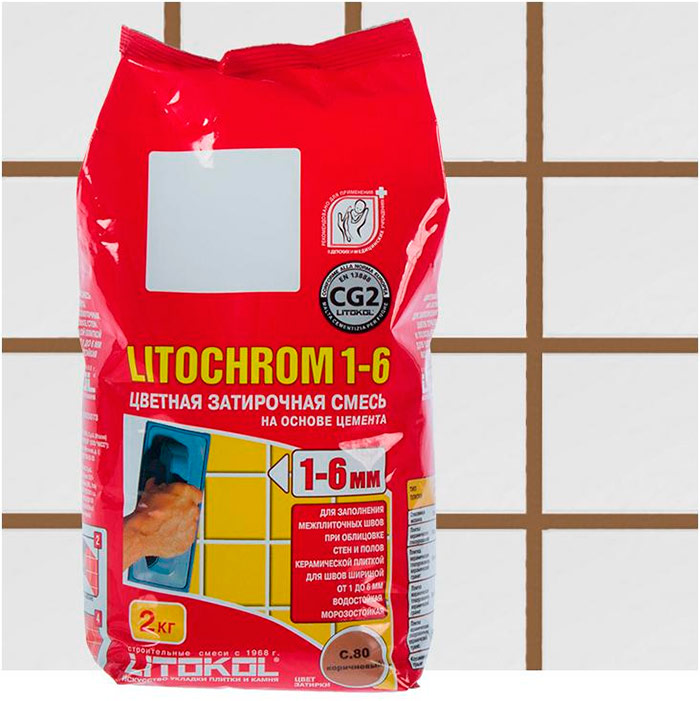

+ The advantages of cement grout
- Easy to apply. Even a person without qualifications can work with a fugue without fear of spoiling the appearance of the tile.
- Gradual hardening. If deficiencies are identified, the seams can be quickly fixed.
- Availability. Compared to other fugues, this is the least expensive option for grouting.
- Maintainability. When defects appear, the seams are easy to repair.

- Cons of cement grout
- Porosity. Cement joints absorb moisture and absorb dirt, so mold and fungus often appear on them.
- Inadequate adhesion. Mixtures do not adhere well to the facing material, and are not suitable for glass tiles at all.
- Color change. Over time, the grout may darken by 1-2 tones due to moisture and the use of cleaning products. And when applying a protective impregnation, the seams will darken immediately.
- Instability to certain chemicals.
- Acidic agents destroy cement; only alkaline compounds should be used when cleaning joints.
- A small variety of colors. In comparison with other types of grouting, the palette of cement mixtures is limited.
Areas of use. Cement grout is suitable for finishing tiles in rooms where humidity is not high: an apron in the kitchen, floor in the corridors, walls in the toilet. When used in the bathroom or near the sink in the kitchen, it is better to use a latex supplement.If you mix the puffer not with water, but with a special latex additive, then the elasticity and moisture resistance of the grout increases significantly. A mixture with latex can be used for showers and even for pools.
Epoxy grout
Unlike cement based fugues, epoxy grout consists of two components that must be mixed before use.
The package contains:
- epoxy resin (sand filler, plasticizer and pigment);
- hardener.
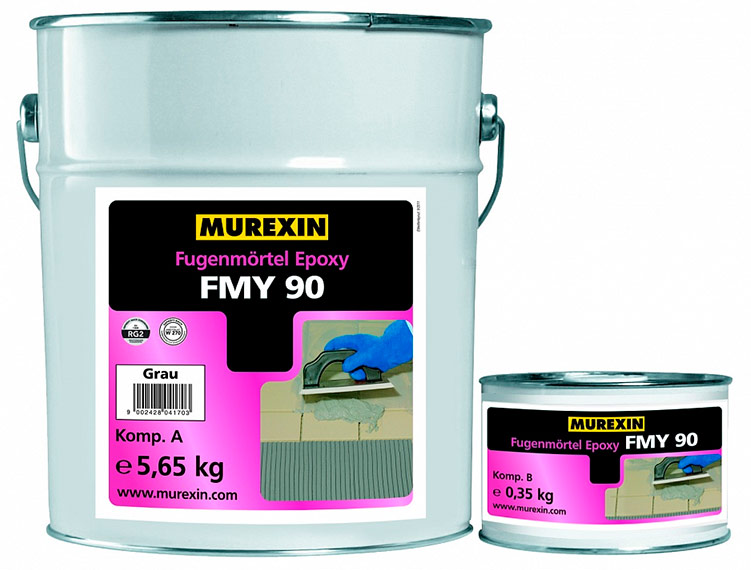
This grout is used for processing joints with a sufficiently large width - up to 15 mm, it holds well and does not crack. It is believed that epoxy grouts are not environmentally friendly enough. But this is not true, because the mixture can emit harmful substances only during the preparation process. After solidification, no volatile components are released.
If it is difficult to determine which grout for tiles in the bathroom is better, you can safely choose epoxy mixtures. This material will serve for a long time and reliably, but requires skills and experience in applying it.

+ Advantages of Epoxy Grout
- High-quality waterproofing. Moisture does not penetrate into the seams based on epoxy; therefore, fungus and mold do not form on them.
- Resistance to deformation. With small fluctuations in the surface, the seams do not crack, which is especially important when gluing tiles on drywall.
- Durability. With proper care, the grout will not darken and will retain its original appearance for 50 years.
- Strength. According to its strength properties, epoxy is similar to tile glue.
- Resistance to external influences. Grout is not subject to fading from direct sunlight, is not afraid of temperature changes and tolerates cleaning with chemicals.
- Universality. The mixture can process the seams between the tiles made of various materials - ceramics, glass, metal, natural stone.
- Aesthetics. The seams look smooth and evenly filled. When special sparkles (glitters) are introduced into the mixture, decorative properties are enhanced, and luminescent additives provide a glow in the dark.

- Cons of epoxy grout
- High price. Epoxy-based mixtures are several times more expensive than conventional ones. In addition, usually along with grouting, it is necessary to purchase a tool to remove plaque from the tile, which further increases the price.
- Features of application. The work of mashing the seams must be trusted by a specialist, because it requires special skills. Self-application can lead to the fact that the seams will be uneven, and an ugly hard-to-remove coating will remain on the tile.
- Rough surface. Since the composition contains quartz sand, it is quite difficult to level the seams. In addition, trash can cling to them.
- Low heat resistance. Unlike cement grouts, epoxy can withstand heat up to 70-80 ° C, although such conditions are practically not found in everyday life.
Areas of use. Epoxy grout is used in rooms where humidity is high: in the bathroom, corridor, on the terrace, in the kitchen for an apron. The mixture is perfect for swimming pools, car washes, laboratories, garages, as it is able to actively resist the action of chemicals.
Polyurethane Grout
Polyurethane grout is a water-dispersion solution of polyurethane resins. The material has excellent water repellent characteristics. The elasticity of the grout allows you to use it for sealing joints and crevices on moving substrates. The thickness of the gap can be from 0.1 to 0.6 cm.
If in doubt about the choice of grout color, you can experiment with several shades of polyurethane mixture. Until completely dry, it is easily removed.
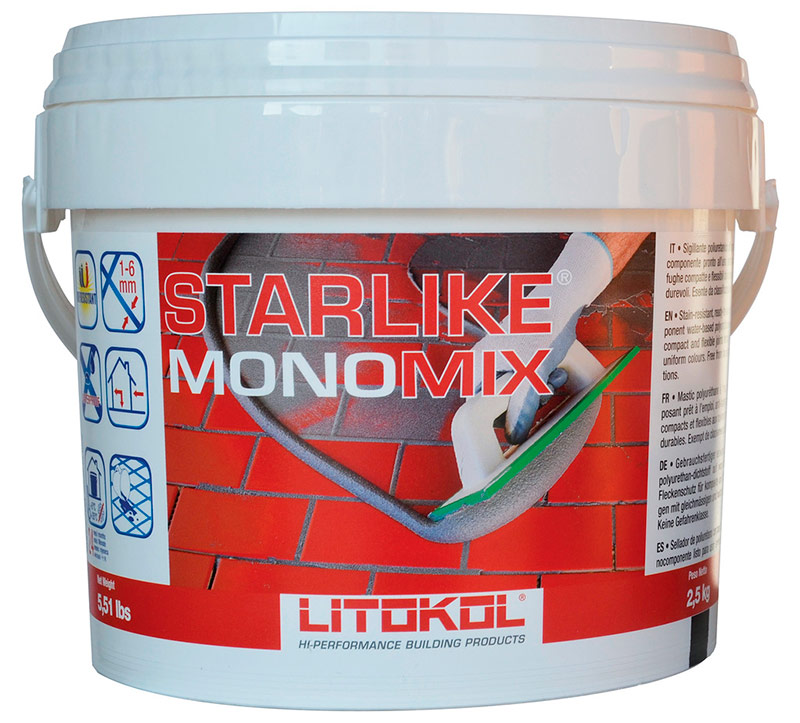

+ The benefits of polyurethane grout
- High water repellent properties.
- No need to mix components.
- Ease of application.
- The ability to fill small gaps (from 0.1 cm).
- Preservation of the original color.
- Simplicity of cleaning the treated surface.

- Cons polyurethane grout
- Insufficient resistance to substances containing chlorine and alcohol.
Areas of use. Polyurethane-based grouts are used both for internal work (tiled seams in the kitchen, in the bathroom, on the heated floor), and for closing gaps on the outside (external cladding, tiled seams on stairs and terraces).
Silicate grout
Another type of grout - silicate - can be made:
- from liquid glass;
- from mineral-inorganic compounds.
Liquid glass grouts can be colored, used for any tile, and transparent, designed for mosaics.
Mineral-inorganic silicate mixtures are used to seal joints at industrial facilities and places where exposure to chemistry, high humidity and low temperature is possible. Suitable for sealing joints between ceramic tiles, artificial stone, porcelain stoneware, mosaics.
The mixture is applied with a special rubber spatula, the remains are easily removed from the tile. The popularity of silicate grout is not as high as that of other types of fugue, but it is indispensable for work with transparent mosaic.
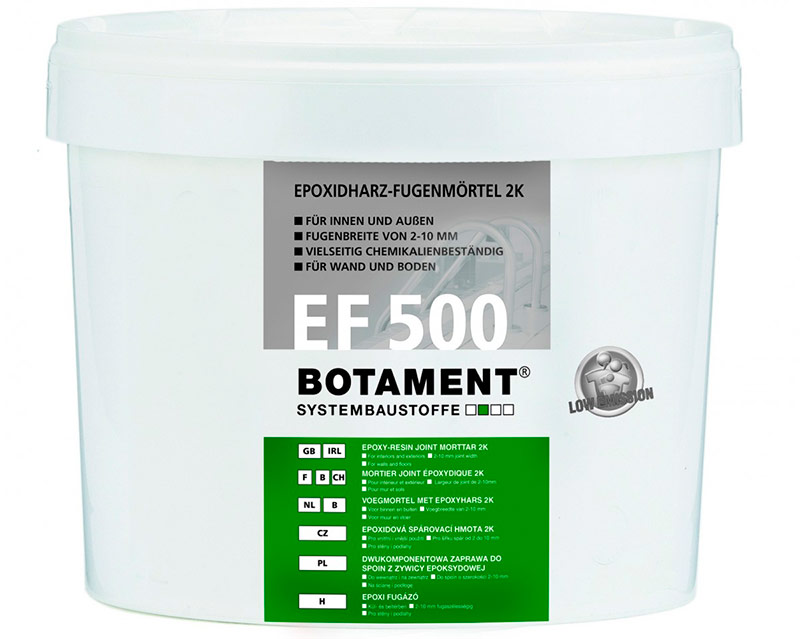

+ The benefits of silicate grout
- Resistance to chemicals and steaming.
- Effective water repellent.
good adhesion. - Resistance to mechanical stress, abrasion and temperature changes.

- Cons silicate grout
- Not very suitable for ordinary tiles, but not interchangeable on transparent mosaics.
Areas of use. Grout is used for outdoor and indoor use. High resistance to weather conditions and aggressive environments allows the mixture to be used for industrial facilities.
Silicone grout
In fact, silicone grout is a sealant for sealing joints at the corners and at the joints of the wall with the floor or bath. It is suitable for sealing bath skirting, shower trays. Typically, this material is used for gaps with a width of not more than 0.3 cm. It is better to purchase a sanitary sealant, which has an antiseptic in its composition.
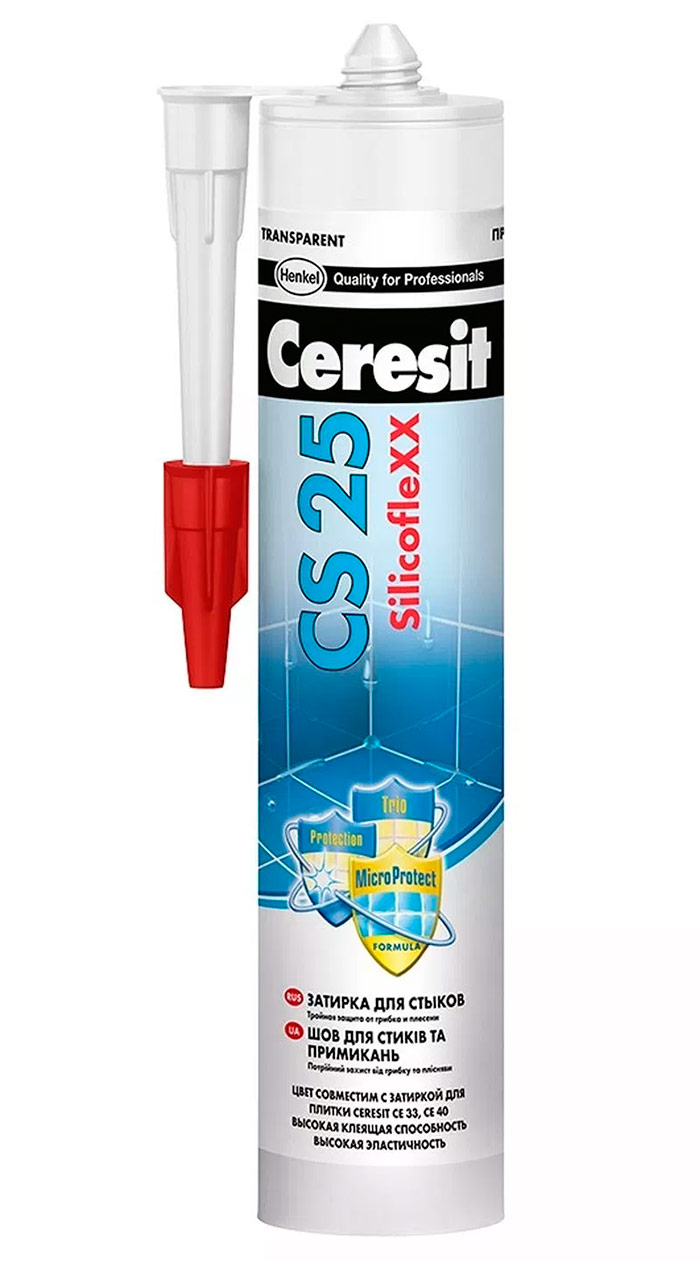

+ Advantages of Silicone Sealant
- The main advantage of the sealant is its elasticity. Flexible grout tolerates mechanical stress, it will not shift, even if the wall shrinks.
- Another advantage is its high resistance to moisture, so the material is widely used for bathtubs, sinks, showers.

- Cons Silicone Sealant
- The complexity of the work. To accurately apply sealant, you must carefully work with each seam.
- Fading. The base color changes rapidly under the influence of cleaning products and moisture. Sealant should be used where it is not striking.
- Difficulty removing from the surface. If the grout spreads over the tile, spots will remain on it, which will have to be destroyed with a blade and acetone.
It should be remembered that silicone sealant is not a complete replacement for grouts based on cement and epoxy. The composition can not handle large areas. This is just an auxiliary material for sealing individual sections and joints.
Watch the video about the types of grouts and their application:
How to choose a grout for a tile by color
Next, find out which grout for the tile is better depending on the color of the tile. The color palette of grout mixes is very wide, ranging from classic white to the most incredible shades. You can find a puffer that exactly repeats the color of the tiles, or play in contrast. There are grout options, colors to which the consumer selects. The general aesthetics of the interior depends on the correct choice.
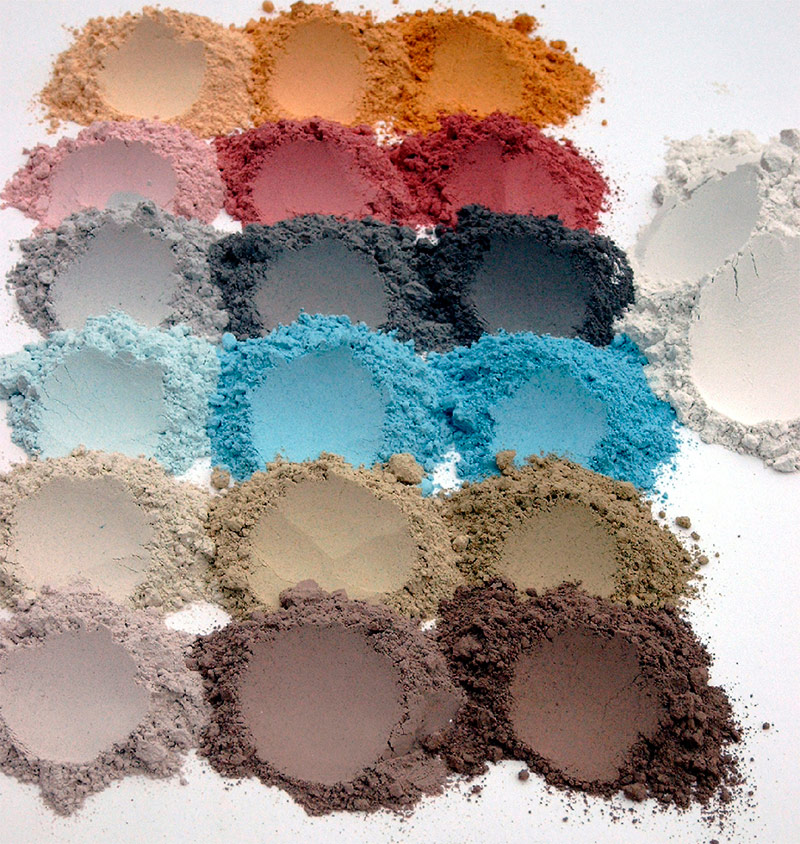
Cement grout color options.
White grout
White grout is universal. It goes with tiles of any color and emphasizes its contours.If you doubt the choice of grout color for a long time, take white.
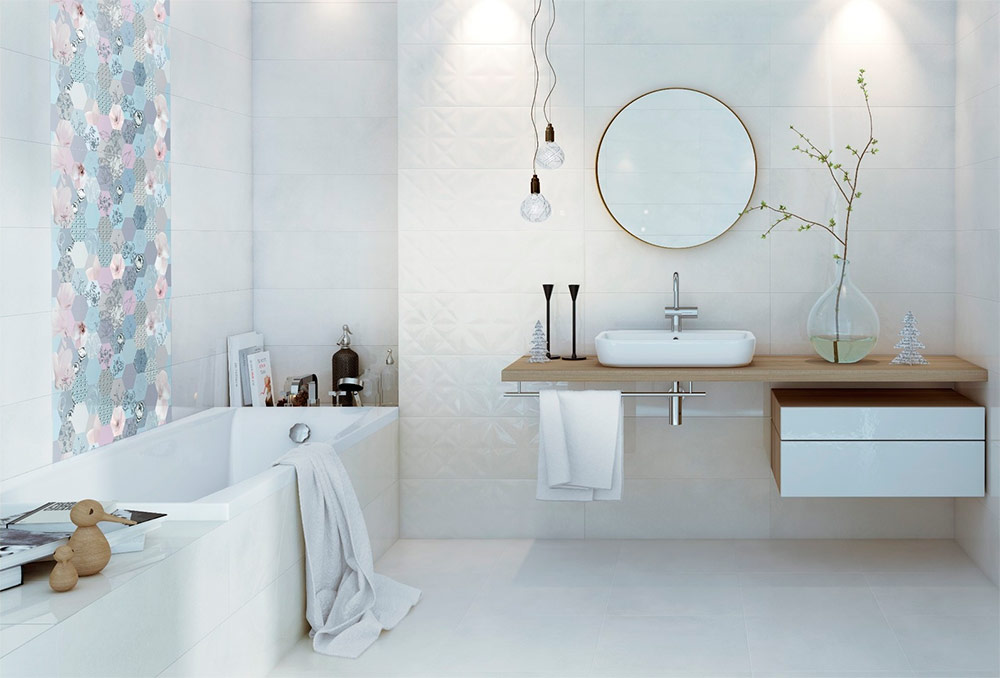
White grout on a white tile creates a coherent whole.
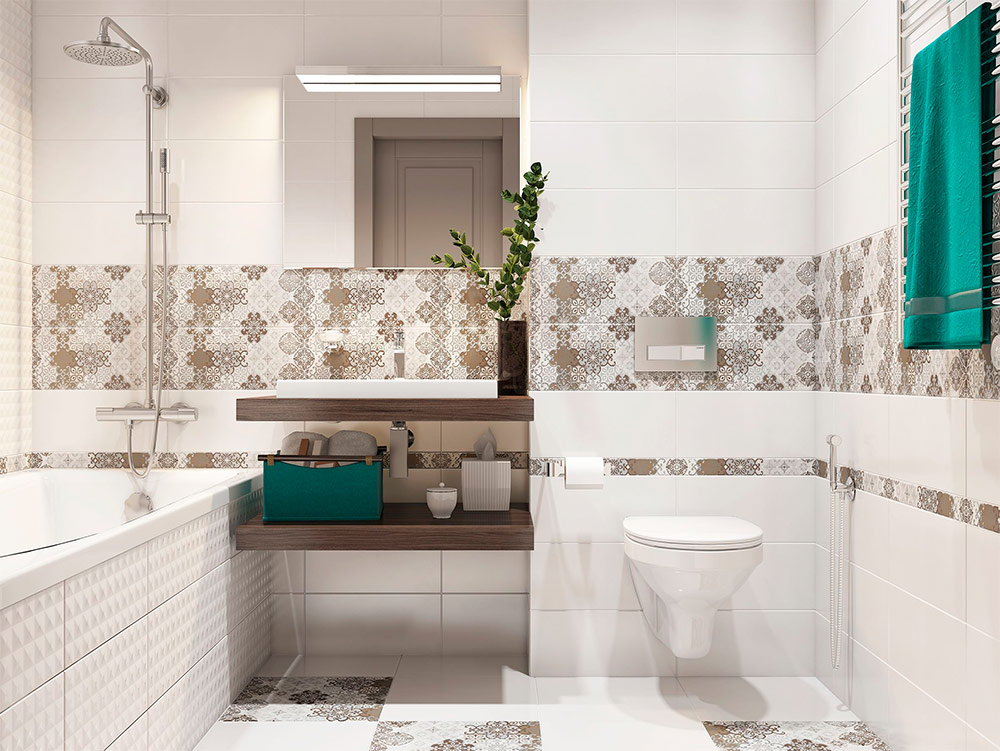
White grout on the combined tile.
Tile grout
If the room is small and you want to visually expand it, they select a grout that exactly repeats the color of the tile, or a little lighter or darker. In this case, before the start of work, the shade of the tile is compared with the already dried grout, because it becomes slightly lighter after drying. This technique allows you to hide existing stacking defects and create a single surface.
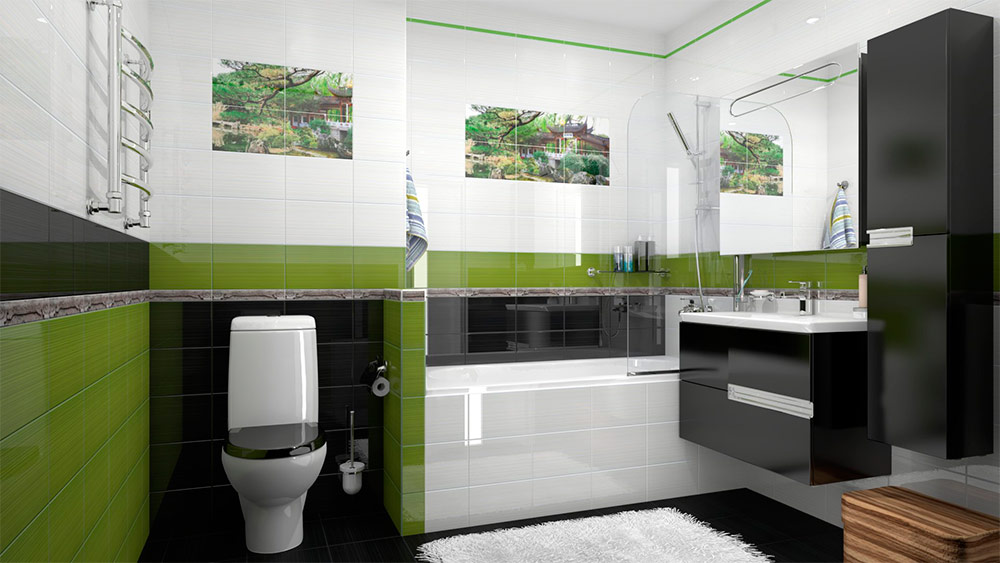
The grout is applied in tone of gray, green and black tiles.
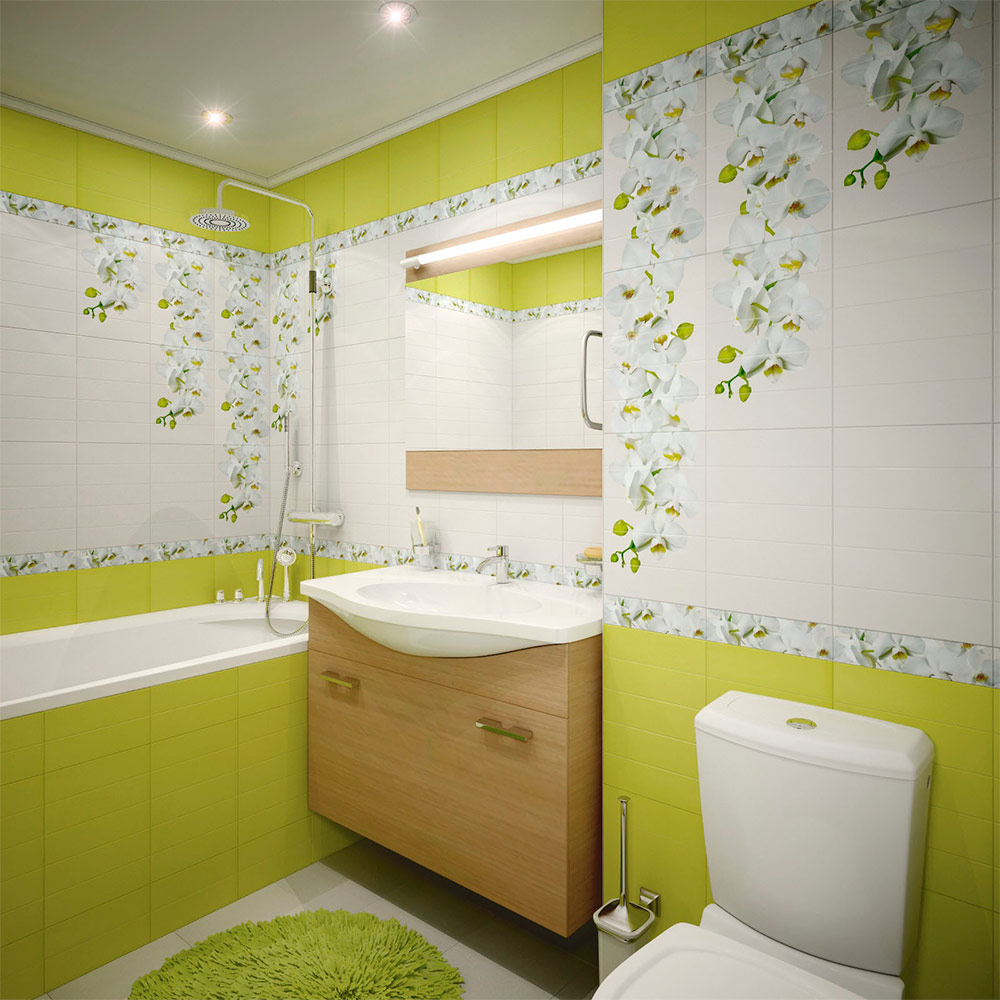
In this case, grout was used in tone of light and green tiles.
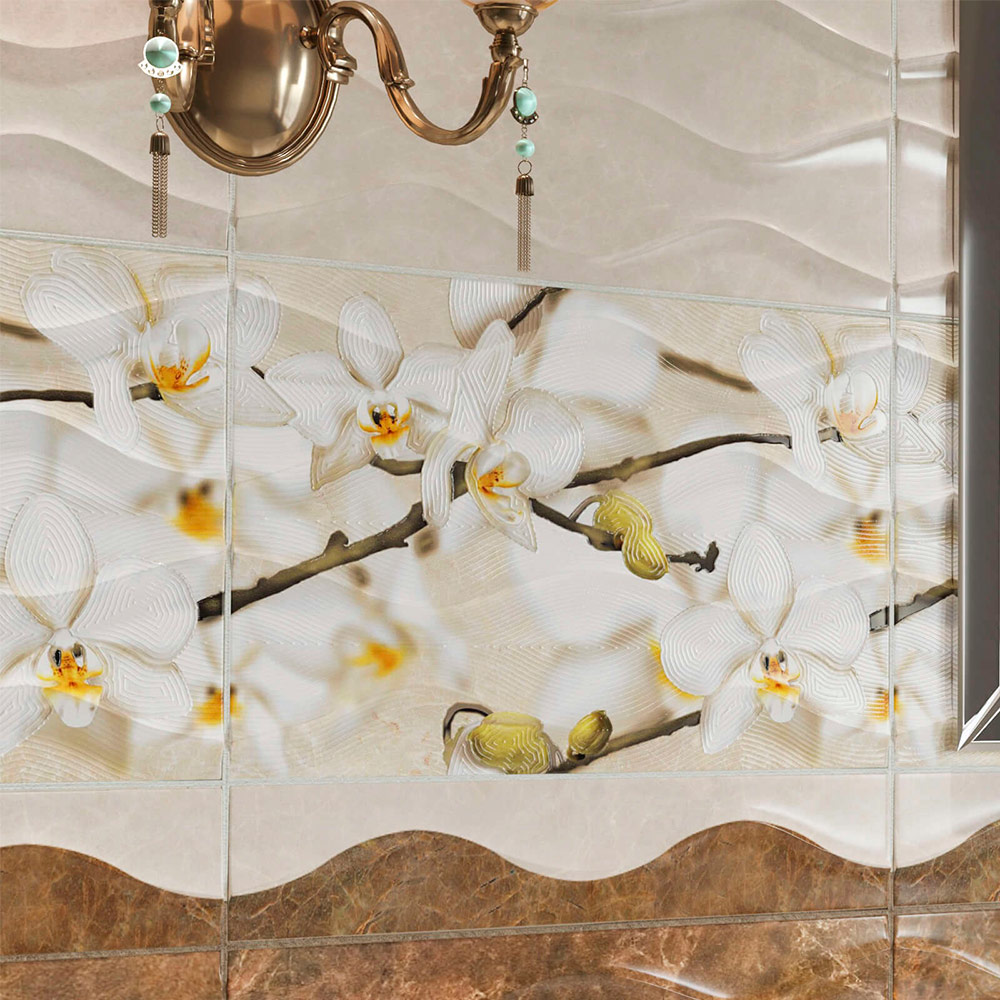
Used brown grout turning into white.
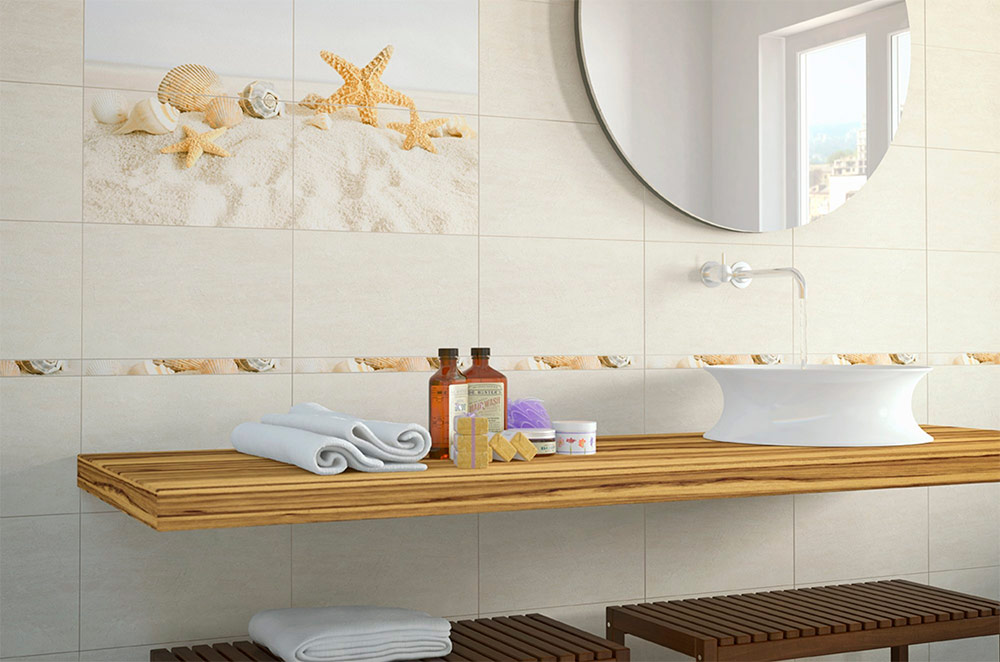
Tile grout, but with a little contrast.
Game in contrast
The use of contrast grout makes it possible to highlight tile elements. This technique is best used for non-standard tiles or with a pronounced color. It is better to try contrasting shades in advance so that the room does not turn into a constant irritant. For example, on a brown tile seams of white, yellow or black colors will look good.
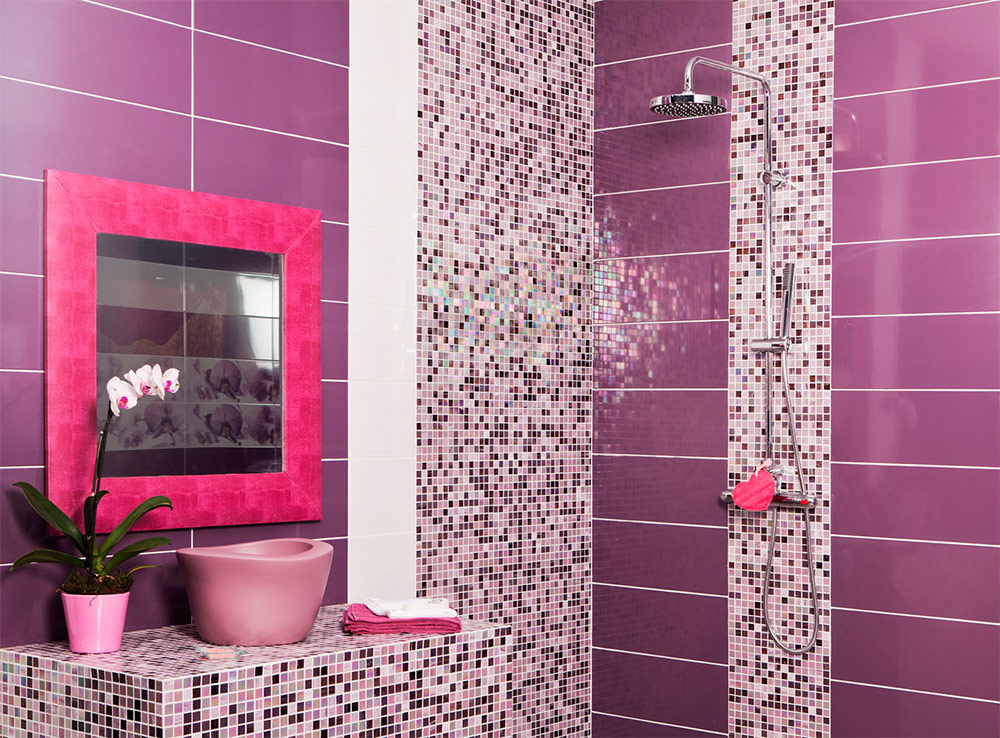
White grout is used to seal joints of mosaics and tiles, with each tile highlighted by a white seam.
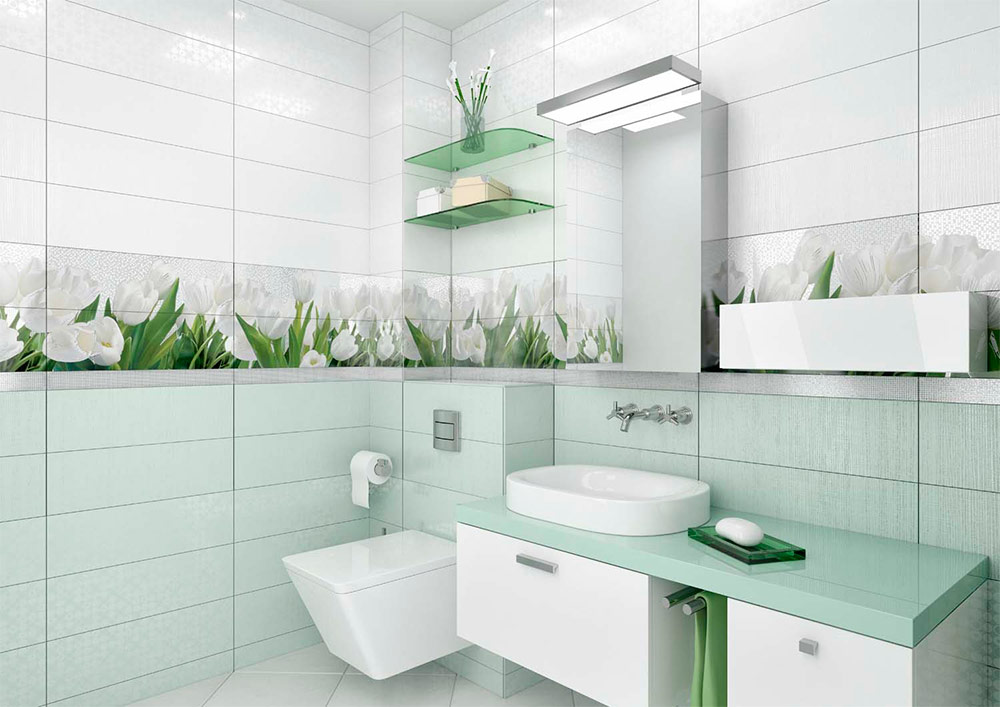
Contrast grout made in tone tiles, but darker by several tones.
Shining effect
To diversify the visual perception of the tile, grouting with glitters will help. These are special spangles that are added to the epoxy mixture used for any room.
The following types of sparkles are distinguished by color:
- silvery;
- golden;
- bronze.
At the same time, the color of the grout can be any, but it is glitter that gives it a shade. Glitter grout looks good on a plain mosaic. In order for the seams to shine, light must fall on them. Therefore, appropriate lighting must be taken care of in advance.
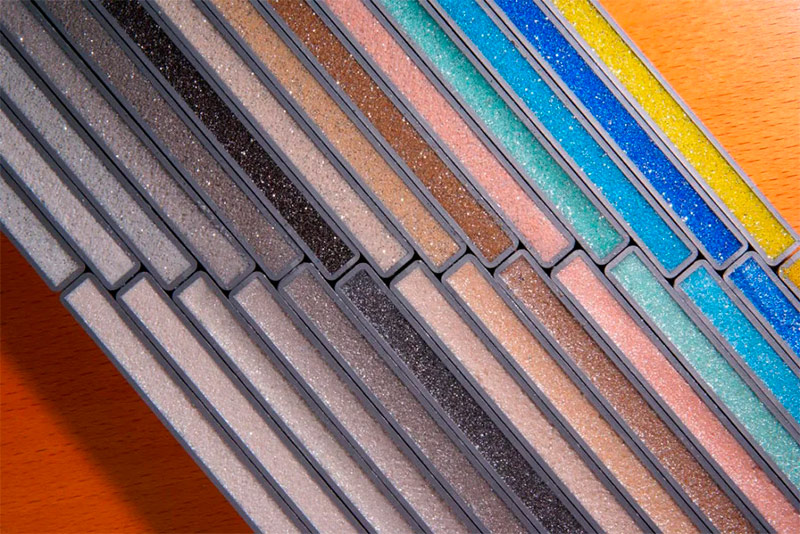
Glitter grout color options.
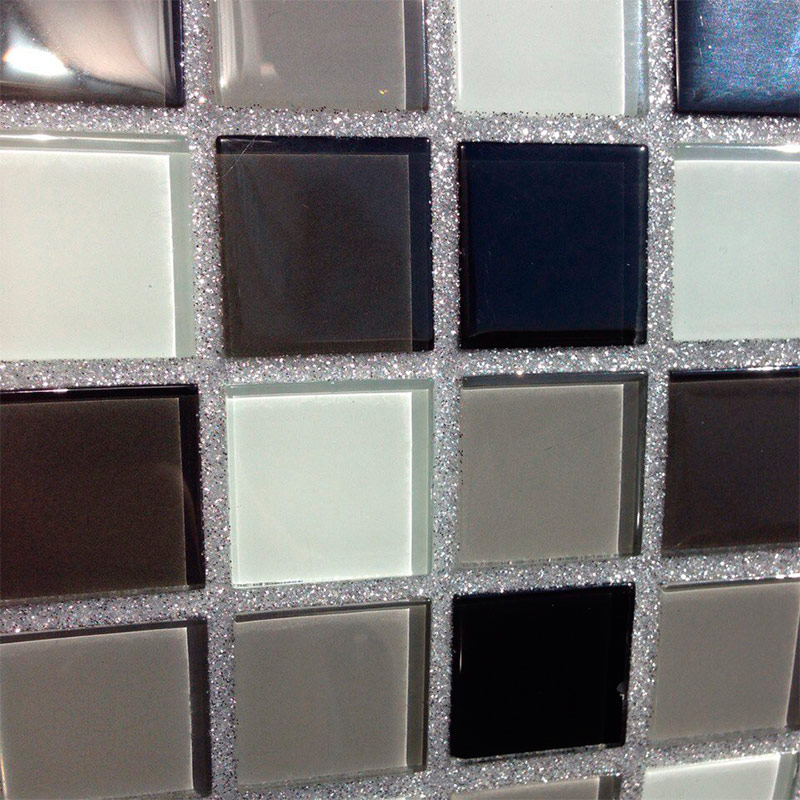
Most often, glitter grout is used for mosaic jointing.
Glow effect
An interesting new option for grouting is a mixture with a luminescence effect. In the light, the seams look like ordinary, but in the dark they begin to shine with a bluish tint. It is not necessary that the room is completely dark, you can simply install the lights so that the light does not get on the cladding.
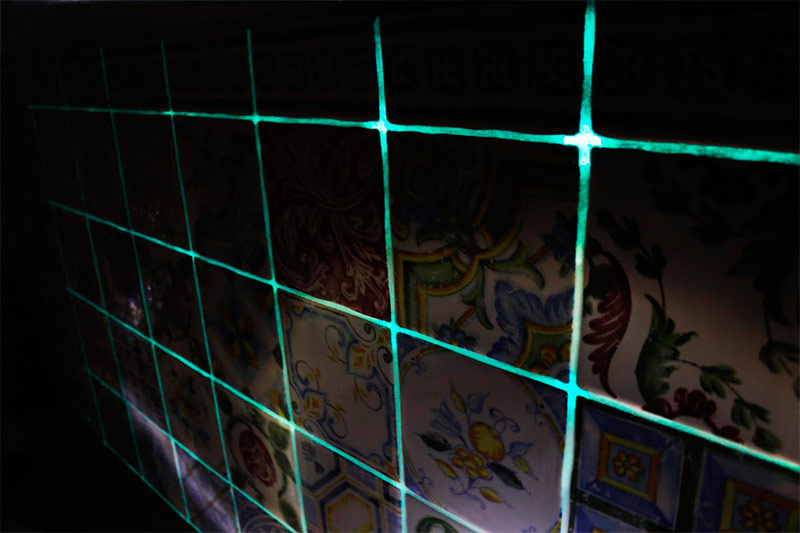
Luminous grout for tiles.
The choice of the color of the grout, depending on the location of the tile
For tiles laid on the floor and tiles laid on the walls, it is necessary to select the appropriate grout color. If you use white or light cement-based grout for tiles laid on the floor, then over time the tile joints will become dirty and gray. There are several ways to get out of this situation.
1. If you do not want to spend money on expensive epoxy grout, then choose a gray cement grout. Such a grout does not change the appearance throughout the entire life cycle.
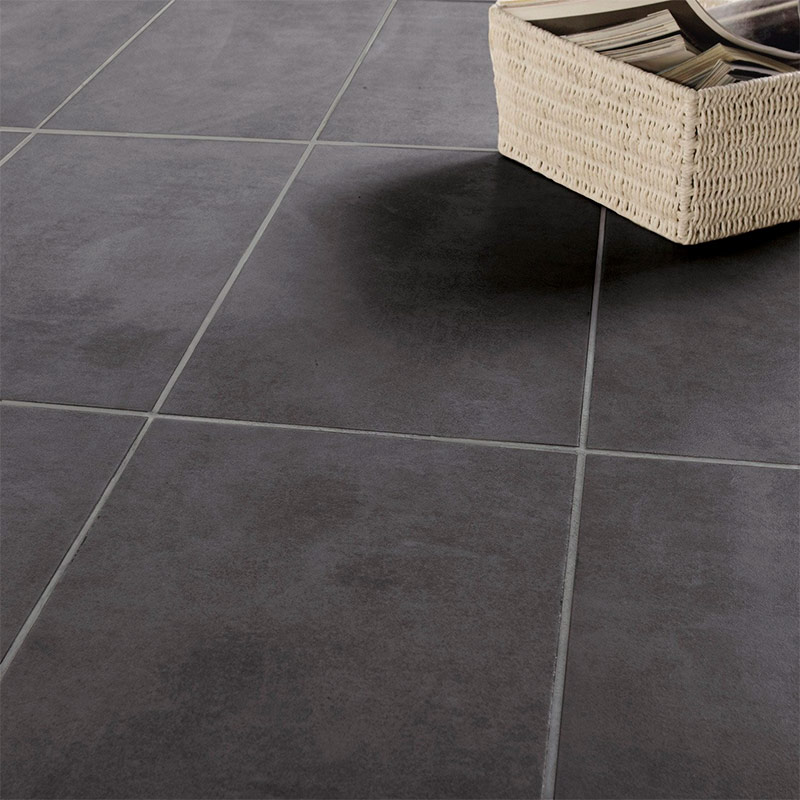
Gray cement grout for floor tiles.
2. If it is important for you to use a puffer of a certain color and this color is not gray, then use a grout with dirt and water repellent properties. As a rule, epoxy grouts are chosen for such purposes.
Compatibility of primary colors of tiles and grout
| Tile color | Grout color | ||||||||||
|---|---|---|---|---|---|---|---|---|---|---|---|
| White | Gray | Yellow | Brown | Orange | Green | Turquoise | Blue | Purple | Red | The black | |
| White | |
|
|||||||||
| Gray | |||||||||||
| Yellow | |||||||||||
| Brown | |||||||||||
| Orange | |||||||||||
| Green | |||||||||||
| Turquoise | |||||||||||
| Blue | |||||||||||
| Purple | |||||||||||
| Red | |||||||||||
| The black | |||||||||||
Features of the choice of grout depending on the purpose
The life of the grout largely depends on the correct choice of the mixture. As a rule, manufacturers indicate on the packaging under what conditions the material can be used.
For houses or apartments where the air is sufficiently dry, cement mixtures are usually used.But for rooms with high humidity, such as a bath or a bath, you need to use epoxy grouts. Despite their high cost, with appropriate care, they serve from 30 to 50 years.
For external cladding, it is necessary to purchase a frost-resistant grout that does not crack under the influence of low temperatures. Elastic materials suitable for joints where deformation is possible.
All grouts sold on the building materials market must comply with the European standard DIN EN 13888, which defines the division of mixtures into the following classes:
- CG1 (cement based) - the material so labeled is used for dry rooms without significant temperature fluctuations;
- CG2 (cement based) - the material withstands more severe conditions. Additional letter A indicates abrasion resistance, and letter W indicates increased resistance to moisture;
- RG (resin based) - the most resistant to high humidity and temperature fluctuations of the mixture.
The main properties of the grout are reflected in the inscriptions on the package, where it is indicated for working under what conditions the mixture is intended.
Top tile grout manufacturers
To make repairs and forget about it for a long time, you need to spare no money and buy materials from manufacturers with an impeccable reputation. The best world brands make grouts, precisely following the recipe and using high-quality ingredients.
Experts recommend purchasing products from the best manufacturers:
Mapei
The Italian brand specializes in grouts based on cement and epoxy.

See Mapei Grout Prices:
Sopro
German manufacturer of quality grouts with a wide variety of assortment.
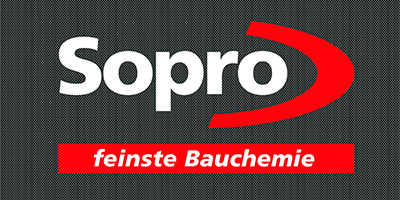
Litocol
Italian manufacturer, manufactures cement and epoxy mixtures with various additives.

Ceresit
A German company that produces all kinds of grouts with one and two components in the composition plus modifier additives.

Atlas
One of the few manufacturers in Eastern Europe (Poland), whose products are highly regarded in the world.

We hope you now know how to choose a grout for a tile and you can choose high-quality and durable material in accordance with the purpose of the room and its design.

